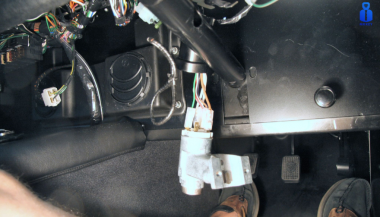Car keys and locks are everyday essentials that we often take for granted—until they malfunction. From ensuring the longevity of your car keys to properly lubricating locks for smooth operation, maintenance plays a vital role in avoiding inconvenience and costly repairs. In this guide, we explore how to care for your car keys and master the art of lock lubrication.
Common Issues with Car Keys and How to Prevent Them
Car keys are more than just tools; they’re lifelines to your vehicle. Whether you have a traditional metal key or an advanced smart key, these essential devices are prone to wear and tear. Understanding common problems and their solutions can save you time and stress.
1. Worn-Out Key Blades
Over time, the metal blades of traditional car keys can become worn, making it difficult to start your car. This is especially common in keys used frequently or roughly. To prevent this, avoid using your car key for tasks like opening packages or prying objects.
2. Weak Key Fob Batteries
For those with remote or smart keys, a weak battery is a common issue. A fading signal or difficulty locking/unlocking your car remotely are signs it’s time for a battery replacement. Replacing the battery every 1-2 years can help maintain consistent performance.
3. Scratched or Damaged Smart Keys
Smart keys have sensitive electronics that can be damaged by rough handling or exposure to extreme temperatures. Always store your key in a protective case and keep it away from direct sunlight or freezing conditions.
Pro Tip: Always have a spare key on hand. This not only saves time during emergencies but also reduces the wear on your primary key.
Why Locks Need Regular Lubrication
Locks are intricate mechanisms designed to provide security. However, dirt, grime, and regular use can cause them to stick or malfunction. Lubrication ensures smooth operation and prevents long-term damage.
How Locks Deteriorate
Locks endure constant exposure to the elements, which makes them vulnerable to dirt, dust, and moisture. Over time, these factors can lead to stiffness, making it difficult to turn the key. If left unchecked, the lock may become entirely unusable, requiring costly replacement.
Choosing the Right Lock Lubricant
Not all lubricants are created equal, and choosing the right one is crucial for maintaining your locks. Here are the best options:
Graphite Powder
This dry lubricant is a top choice for locks. It doesn’t attract dust and provides smooth operation without residue build-up.
Silicone Spray
Silicone-based sprays offer moisture resistance and work well for both interior and exterior locks. Avoid over-applying, as excess lubricant can attract grime.
Avoid Oil-Based Lubricants
Products like WD-40 may seem convenient but are not ideal for locks. They can attract dirt and worsen the problem over time.
Step-by-Step Guide to Lubricating a Lock
Follow these steps to keep your locks functioning flawlessly:
Clean the Lock
Begin by removing visible dirt and debris using a soft brush or compressed air. This ensures the lubricant can reach internal components effectively.
Apply Lubricant
Insert the nozzle of your lubricant into the keyhole and spray or apply a small amount. If using graphite powder, gently squeeze the bottle to distribute the powder evenly.
Insert and Turn the Key
Insert your key and turn it several times to distribute the lubricant throughout the lock mechanism.
Test the Lock
Check the lock’s operation by locking and unlocking it multiple times. If it still feels stiff, reapply a small amount of lubricant.
Pro Tip: Lubricate locks every 6-12 months, or more frequently if they’re exposed to harsh weather conditions.
Maintenance Tips for Long-Term Performance
1. Protect Outdoor Locks
For locks exposed to the elements, such as gates or sheds, consider using a lock cover to shield them from rain and snow. Regularly inspect and lubricate these locks to prevent rust and corrosion.
2. Store Spare Keys Properly
Spare keys should be kept in a safe, dry place. Avoid leaving them in areas with high humidity, as moisture can lead to rust on metal keys.
3. Address Issues Early
If you notice stiffness or difficulty turning a key, address the issue immediately. Ignoring minor problems can lead to complete lock failure.
The Global Perspective on Lock and Key Maintenance
Different regions face unique challenges when it comes to maintaining locks and keys. In cold climates, freezing temperatures can cause locks to seize, requiring specialized de-icing sprays. In humid or coastal areas, locks are more prone to rust and may need frequent lubrication to combat corrosion.
Meanwhile, digital locks are becoming increasingly popular in urban areas worldwide. These systems require their own maintenance, such as software updates and battery replacements, to ensure optimal functionality.
A Little Maintenance Goes a Long Way
Caring for your car keys and locks is a small investment of time that can save you from major inconveniences. By taking preventative steps like lubricating locks and protecting your keys, you can ensure their longevity and performance.
Take a moment today to inspect your keys and locks. Are they in optimal condition? If not, a quick round of maintenance can make all the difference. For more insights on maintaining your everyday essentials, explore our other articles and unlock the secrets to hassle-free living.

 (1)_1737723462.jpg)


_1751539001.jpg)
